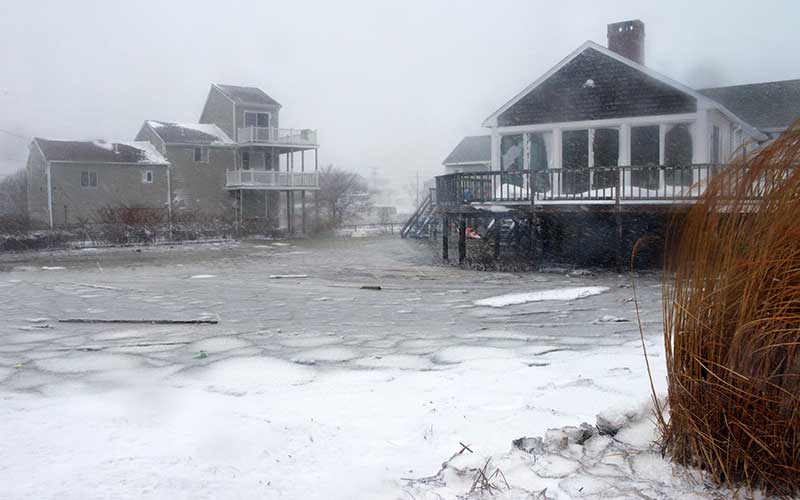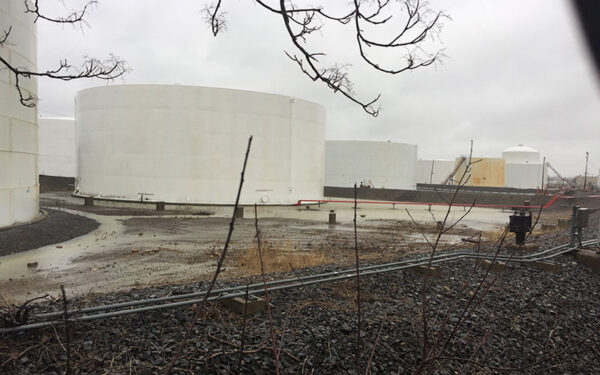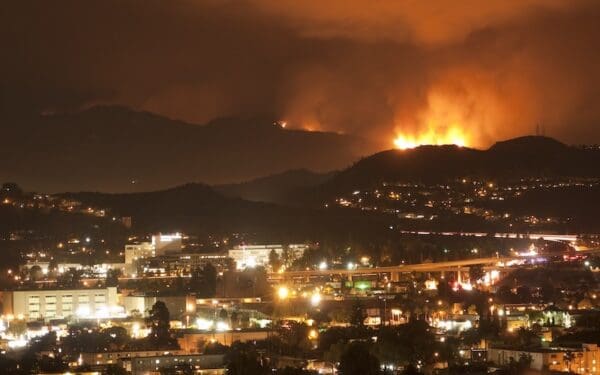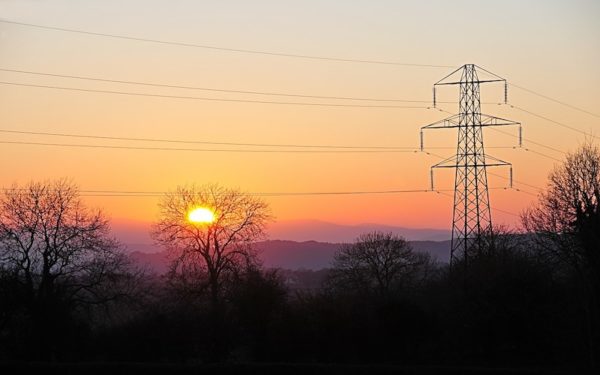
We're already seeing more extreme weather in Massachusetts, but our laws aren't strong enough to keep our infrastructure safe. Photo: 1st Sgt Don Veitch, Massachusetts National Guard
Bomb cyclones, historic flooding, record-breaking hurricanes and wildfires. More and deadlier severe weather has become the norm in our daily news headlines, and the scale and pace of climate change impacts could be even greater than initially expected.
While these impacts and their severity vary, we know that New England will face higher temperatures, more and heavier rainfall, a rising sea level, and more intense storms. These changes will have an extraordinary effect on our buildings, roads, bridges, and other infrastructure. But right now, there’s no guarantee that our infrastructure will be safe from harm.
We have the tools to understand and foresee the risks to our communities posed by a changing climate. That knowledge should be used to write adaptation strategies into our laws and regulations now, while we still have time to prepare for them.
While cutting our climate-damaging emissions remains critical to combatting climate change, we must also prepare for the impacts we know are coming. Two bills introduced in the Massachusetts legislature this session could lead the way for the rest of New England to adapt to our new climate reality.
Plans Are Good, but Now We Need Action
Adapting to climate change means preparing our communities for changing conditions. We must ensure that our built (like buildings and roads) and natural (like parks and wetlands) systems can withstand and bounce back from extreme weather.
Some developers have already started to do this voluntarily. They have protected their buildings by elevating land and incorporating nature-based measures like living shorelines and berms that can absorb or rebuff high waters. Cities and towns in Massachusetts are evaluating ways to upgrade infrastructure like dams and roads to withstand more severe storms. Across the Commonwealth, we have many examples that show adaptation is not only possible but a good investment. (Spaulding Rehabilitation Hospital in the Charlestown Navy Yard is just one example of smart, resilient design in recent years.)
But voluntary actions only go so far. While the State has implemented several voluntary programs and incentives to encourage climate adaptation, they are not enough to create a noticeable change in how we plan, design, or develop infrastructure or use land. Climate resilience is still viewed as a bonus – an additional, optional layer of protection – rather than a minimum requirement for health and safety. Too many new roads, buildings, and other infrastructure are still designed and built assuming climate patterns of the past rather than those observed in the present or predicted for the future.
We know that climate change will make conditions much worse than the historical data imply. Relying only on that historical data makes it impossible to adequately address the social, environmental, and fiscal risks we face when our critical infrastructure, development, and communities are unprepared. This is even more concerning given the rapid pace of development in Boston and other cities across the Commonwealth. (Listen to our teleconference about building a climate-resilient New England here.)
New Bills Would Help to Protect People and Property from Climate Impacts
Two bills introduced this session in the Massachusetts legislature seek to address this shortcoming. Filed by Representative Sarah Peake (H.841) and Senator Nick Collins (S.79), the bills will mandate that state government consider and address the reasonably foreseeable risks of climate change when it approves permits for new development, provides financing for projects through grants or tax breaks, and issues requests for proposals on its own capital projects like state roads and bridges. It also requires utility providers like National Grid and Eversource to incorporate climate adaptation planning into their facilities.
While the requirements for different types and sizes of projects would likely vary, new projects that need state approval or funds would be required to consider climate impacts and demonstrate their ability to adapt. Projects must be designed, built, and maintained to withstand flooding from storm surge, heavy rain and snow, and sea level rise, as well as more extreme temperatures and wind speeds and more.
These requirements would apply to large-scale redevelopment projects like Suffolk Downs in East Boston and Revere. This once-in-a-lifetime project will create an entirely new neighborhood and has the opportunity to incorporate climate conditions from the start.
These bills will not only promote more sustainable investment throughout the Commonwealth; they will also help safeguard our economy and increase fiscal responsibility. Taxpayer dollars should not be spent on development and infrastructure that we know is unsustainable.
Legislation Builds on Last Year’s Momentum
These bills are part of a broader recognition on Beacon Hill that we need to do more at a state level to prepare for climate change – and that it can’t be optional. Governor Baker demonstrated his commitment to climate adaptation when he signed last year’s Environmental Bond Bill into law. The bill included authorization for millions of dollars for climate adaptation programs and initiatives like the state’s Municipal Vulnerability and Preparedness (MVP) program. The MVP program provides grants and technical assistance to cities and towns to conduct climate vulnerability assessments and identify assets most at risk from climate impacts.
It also mandated Massachusetts to develop a statewide climate adaptation plan and update it every five years. This will ensure that the state has access to the most current climate science and is planning for climate impacts strategically across the state.
These are all important milestones, but what we need now is the legal teeth to mandate action on these plans and data. Passing H.841 and S.79 is a critical next step in preparing the Commonwealth for the impacts of climate change.
Here is everything these bills would do:
- Adopt a uniform set of data on climate risks. That way, everyone is using the same and most up-to-date information to plan for and act on climate risks.
- Mandate action on climate risks to the built environment by requiring applicants for state permits, funding, and other authorizations to identify and adapt to climate risks to their projects.
- Safeguard critical infrastructure by requiring investor-owned utility companies like National Grid and Eversource to identify and adapt to climate risks for essential facilities and equipment.
- Evaluate the effectiveness of state building codes by requiring the entity responsible for updating them to study the feasibility, impact, economics, and merit of incorporating climate risks into them.
- Promote equity by requiring that any analysis of and adaptation to climate risks ensures those measures do not have harm or impact our most vulnerable communities, including low-income and minority populations disproportionately, for example, by diverting flood water from a wealthy at-risk neighborhood to a low-income one.
- Establish a training program to educate members of local boards and commissions (like planning and zoning boards or conservation commissions) about the risks of climate change.
What Can You Do?
We deserve cities and towns that can weather the climate impacts we know are coming. We shouldn’t have to foot what will surely be an expensive bill because we’re not planning properly for the future.
You can help by calling your legislator today. Tell them that we need to make sure our critical infrastructure is protected from climate impacts, and ask them to vote yes on H.841 and S.79.



